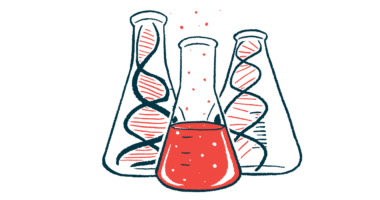Lupus Activity Falls when Anifrolumab Is Added to Therapy Mix, Trial Shows

Patients with systemic lupus erythematosus (SLE) had lower disease activity when they took the investigational treatment anifrolumab along with standard medications, according to a recently completed Phase 2b clinical trial (NCT01438489).
Noting the treatment’s potential to target several organs and ease the disease’s symptoms, researchers called the trial “the most successful phase 2 study in SLE to date.” As with many lupus trials, however, this one did not include patients with kidney or brain issues.
Importantly, patients in the trial with high interferon activity showed better treatment responses to anifrolumab, which blocks type 1 interferon signaling. That supported the notion that interferon drives the disease. But it also suggested other mechanisms might be at work in a subset of patients.
Researchers at the Hofstra Northwell School of Medicine in New York led the study, “Anifrolumab, an Anti–Interferon-α Receptor Monoclonal Antibody, in Moderate-to-Severe Systemic Lupus Erythematosus.“ It was published in the journal Arthritis & Rheumatology.
The trial compared the results of two doses of anifrolumab — 300 mg and 1,000 mg — and a placebo in patients with moderate or severe lupus. Before the treatment started, all patients were tested for interferon activity and stratified into two groups according to disease activity — high or low activity.
Patients were then randomized in a way that allowed them to be compared on the basis of their interferon activity. They were also group on disease severity and corticosteroid doses.
Those in the two treatment groups received intravenous anifrolumab every four weeks for 48 weeks. The study’s primary outcome was analyzed at 24 weeks, however.
Researchers found that more patients on anifrolumab responded to treatment, based on SLE Responder Index (SRI[4]) measurements.
Among those receiving the 300-mg anifrolumab dose, 34.3% responded. In the higher-dose group, the number was 28.8%, while only 17.6% in the placebo group had a response.
Only the lower-dose group showed a response that was statistically different from the placebo group, but that was enough for the study to meet its primary goal.
Looking separately at the groups with high and low interferon activity, it was obvious that those with higher activity benefitted more. Patients on either dose showed a significantly better response than placebo, again with a numerically greater effect in the lower-dose group.
An analysis at 52 weeks showed that more patients had responded in all groups, but the outcome was similar to the first analysis, with lower response rates in those receiving placebo. At 52 weeks, 62.6 percent of patients in the low-dose group showed a treatment response.
Other measures of response, including successful tapering of corticosteroid doses, supported the notion that the treatment was effective. Researchers also concluded that the treatment was effective in targeting various organs affected by the disease, including skin and joints. But patients with severe lupus kidney disease or neuropsychiatric lupus were not included in the study.
“Anifrolumab substantially reduced disease activity compared with placebo across multiple clinical end points in the patients with moderate-to-severe SLE,” the team said.
Although serious adverse events were similar across the three groups, infections — particularly shingles and influenza — were more common in those receiving anifrolumab.
The study was sponsored by anifrolumab’s developer MedImmune, owned by AstraZeneca. Several of the researchers have financial ties to the two companies.






